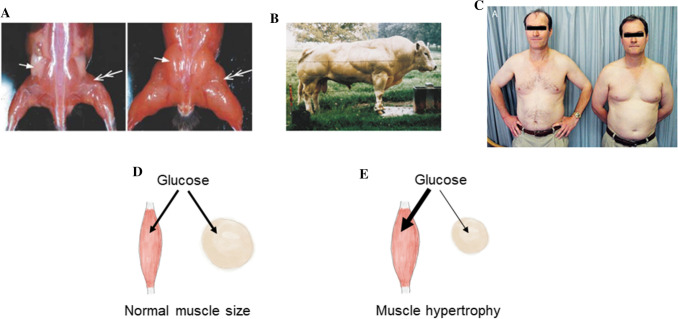Fig. 3.
Indirect evidence for an association between muscle hypertrophy and low adiposity. A Loss of fat pads in mice with muscle hypertrophy where a muscle-specific HSA promoter drives the expression of constitutive Akt1-Egfp in muscle fibres. Even though the transgene is expressed in muscle, inguinal fat pads are lost [60]. B Belgian Blue bull with muscle hypertrophy due to a 11-nucleotide deletion of the Mstn gene that encodes the muscle mass inhibitor myostatin. Note the low amount of subcutaneous fat, suggesting again an association between muscle hypertrophy and low fat mass [64]. C Image of two monozygous twins where the right twin has hypogonadism because of a pituicytoma. The right twin had “proximal muscle wasting” but more body fat when compared with the unaffected twin on the left, again suggesting an inverse relation between muscle mass and fat mass [62]. D, E Schematic of a hypothesis explaining why muscle hypertrophy may result in leanness. When compared with muscles of normal size (E), more glucose and other small molecules are taken up by hypertrophying muscle and thus there is less glucose for triglyceride (fat) synthesis in white adipose tissue. This could possibly explain the effect of muscle hypertrophy on adipose tissue mass

